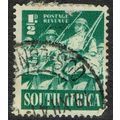London - Lambeth Palace - the herb garden -postcard c.1980s
- Condition : Used
- Dispatch : 2 Days
- Brand : None
- ID# : 119226600
- Quantity : 1 item
- Views : 232
- Location : United Kingdom

- Seller : justthebook (+1712)
- Barcode : None
- Start : Tue 17 Sep 2013 01:13:06 (BST)
- Close : Run Until Sold
- Remain : Run Until Sold
More Listings from This Seller view all
Seller's Description
- Postcard
- Picture / Image: Lambeth Palace, London - The Herb Garden
- Publisher: Walkerprint International
- Postally used: no - message but not posted
- Stamp: n/a
- Postmark(s): n/a
- Sent to: n/a
- Notes / condition:
Please ask if you need any other information and I will do the best I can to answer.
Image may be low res for illustrative purposes - if you need a higher definition image then please contact me and I may be able to send one.
------------------------------------------------
Postage & Packing:
UK (incl. IOM, CI & BFPO): 99p
Europe: £1.60
Rest of world (inc. USA etc): £2.75
No additional charges for more than one postcard. You can buy as many postcards from me as you like and you will just pay the fee above once. (If buying postcards with other things such as books, please contact or wait for invoice before paying).
Payment Methods:
UK - PayPal, Cheque (from UK bank) or postal order
Outside UK: PayPal ONLY (unless otherwise stated) please. NO non-UK currency checks or money orders (sorry).
NOTE: All postcards are sent in brand new stiffened envelopes which I have bought for the task. These are specially made to protect postcards and you may be able to re-use them. In addition there are other costs to sending so the above charge is not just for the stamp!
I will give a full refund if you are not fully satisfied with the postcard.
----------------------------------------------
Text from the free encyclopedia WIKIPEDIA may appear below to give a little background information (internal links may not work) :
*************
Lambeth Palace is the official London residence of the Archbishop of Canterbury in England. It is located in Lambeth, on the south bank of the River Thames a short distance upstream of the Palace of Westminster on the opposite shore.[1] It was acquired by the archbishopric around 1200. It is bounded by Lambeth Palace Road to the west and Lambeth Road to the south. The extensive original garden is now much smaller, with large parts built over, but Archbishop's Park is a public park adjacent to the palace gardens.
The south bank of the Thames, not part of historic London, developed slowly because the land was low and sodden: it was called Lambeth Marsh, as far downriver as the present Blackfriars Road. The name ""Lambeth"" embodies ""hithe"", a landing on the river: archbishops came and went by water, as did John Wycliff, who was tried here for heresy. In the English peasants' revolt of 1381 the Palace was attacked.
The oldest remaining part of the palace is the Early English chapel. The so-called Lollard’s Tower, which retains evidence of its use as a prison in the 17th century, dates from 1440. There is a fine Tudor brick gatehouse built by Cardinal John Morton in 1495. Cardinal Pole lay in state in the palace for 40 days after he died there in 1558. The fig tree in the palace courtyard is possibly grown from a slip taken from one of the White Marseille figs reputedly planted by Cardinal Pole. In 1786[2] there were three ancient figs, two ""nailed against the wall"" and still noted in 1826 as ""two uncommonly fine... traditionally reported to have been planted by Cardinal Pole, and fixed against that part of the palace believed to have been founded by him. They are of the white Marseilles sort, and still bear delicious fruit. ...On the south side of the building, in a small private garden, is another tree of the same kind and age.""[3] By 1882 their place had been taken by several massive offshoots.[4]
The Great Hall was ransacked by Cromwellian troops during the English Civil War, and after the Restoration, it was rebuilt by archbishop William Juxon in 1663 (dated) with a late Gothic hammerbeam roof, the likes of which had not been constructed for a hundred years. In this context, the choice of a hammerbeam roof was evocative; it spoke of High-Church Anglican continuity with the Old Faith (the King's brother was an avowed Catholic), a visual statement that the Interregnum was over. As with some Gothic details on University buildings of the same date, it is debated among architectural historians whether this is Gothic survival or an extraordinary early work of the Gothic Revival. The diarist Samuel Pepys recognized it for what it was: ""a new old-fashioned hall"" he called it. Among the portraits of the archbishops now housed in the Palace are examples by Hans Holbein, Anthony van Dyck, William Hogarth and Sir Joshua Reynolds.
New construction was added to the building in 1834 by Edward Blore (1787–1879), who rebuilt much of Buckingham Palace later. Here his work is neo-Gothic enough to have satisfied Sir Walter Scott, and it fronts a spacious quadrangle. It is these buildings which are now inhabited by the archbishop.
type=printed postcards
theme=topographical: british
sub-theme=england
county/ country=london
number of items=single
period=1945 - present
postage condition=unposted
Listing Information
| Listing Type | Gallery Listing |
| Listing ID# | 119226600 |
| Start Time | Tue 17 Sep 2013 01:13:06 (BST) |
| Close Time | Run Until Sold |
| Starting Bid | Fixed Price (no bidding) |
| Item Condition | Used |
| Bids | 0 |
| Views | 232 |
| Dispatch Time | 2 Days |
| Quantity | 1 |
| Location | United Kingdom |
| Auto Extend | No |



 for 1 item(s)
for 1 item(s)
















